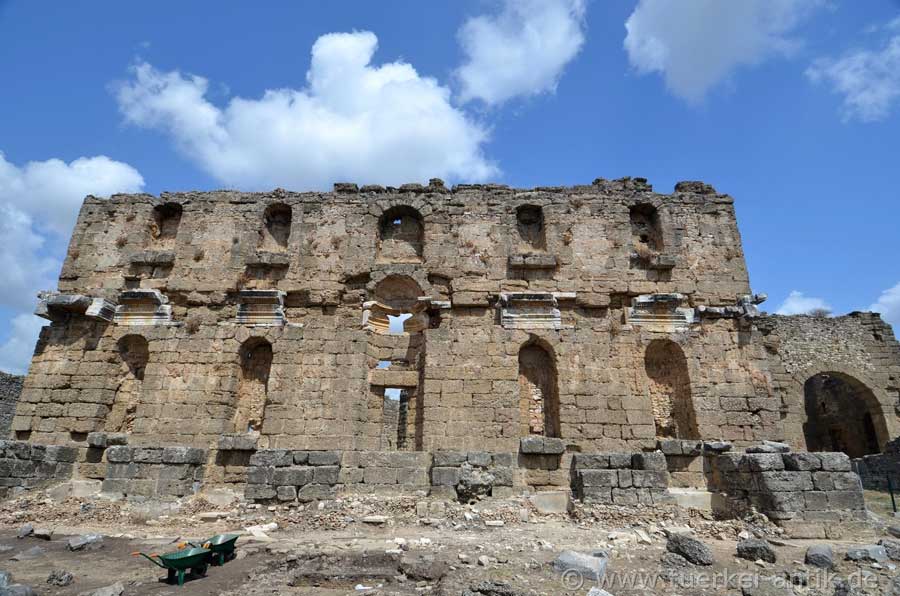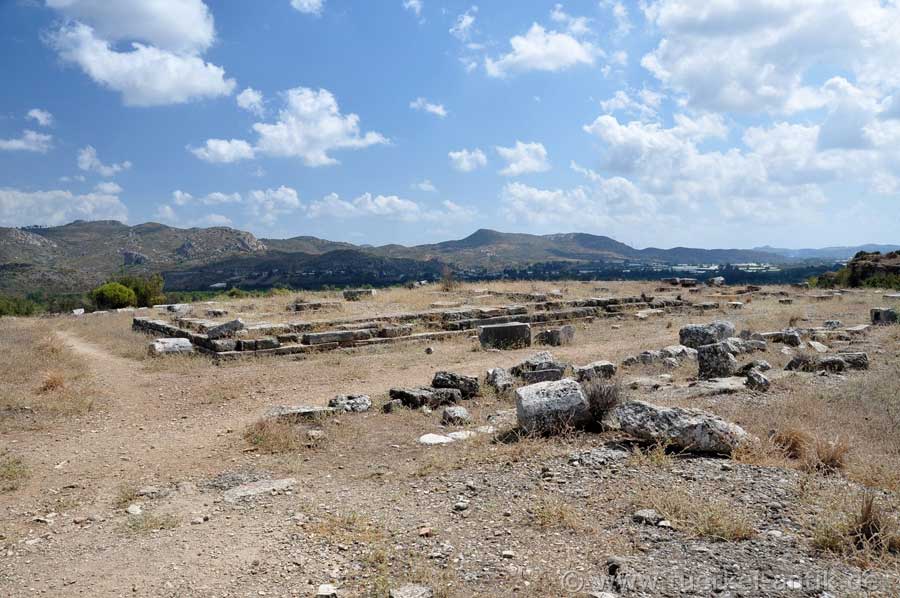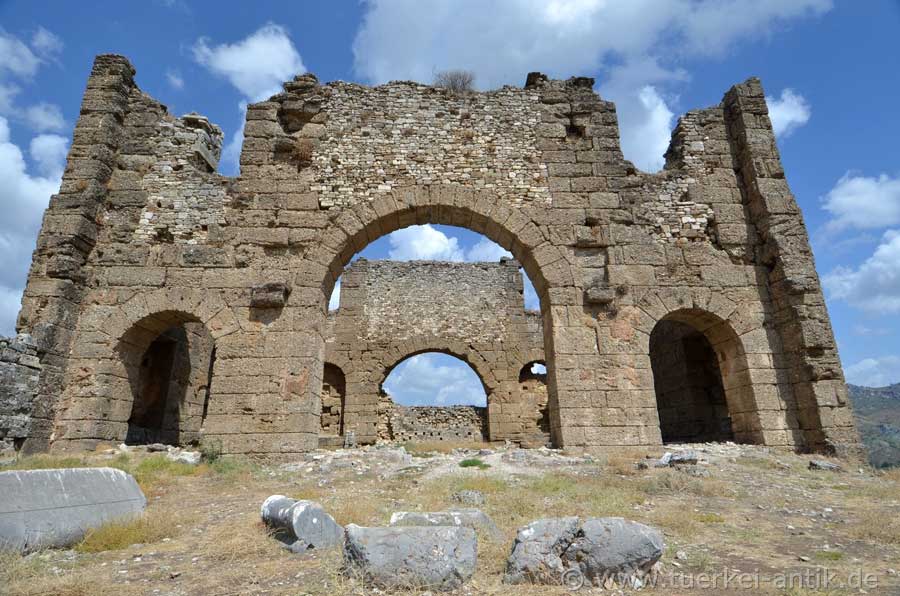 |
| Aspendos in Pamphylia | |||
|
|
|
||
| The Roman Theatre of Aspendos | |||
|
A visit to the ancient Roman theatre of Aspendos is a must for all tourists on the Turkish Riviera. And rightly so, as we think, because this theatre is the third antique theatre in the world with an intact stage house after the one in Bosra in Syria and Orange in the south of France. |
|||
|
|
|||
| The stage house from outside | |||
|
The theatre had 39 rows of seats for 20,000 spectators. The building was erected in the 2nd century AD. Since the Seljuks used the theatre as a caravanserai in the Middle Ages, it was continually repaired. This explains its state of conservation. |
|||
|
|
|||
| View from the stage house | |||
|
In 2015, the approximately 1,800-year-old monument underwent fundamental renovation. Since then, the result has caused widespread ridicule and indignation. As is customary in Turkey, the restorers had placed white marble between the original dark grey steps of the theatre. It is not only tourists who knew the theatre from the past who are strongly critical of the spotty appearance of the rows of seats. |
|||
|
|
|||
| The theatre until 2015 | |||
|
|
|||
| The Stage House | |||
|
The drawing (after Karl Graf Lanckoroński) shows the graphic reconstruction of the side of the stage wall facing the audience (scaena_frons). Below the crown of the wall, the inlets can still be seen, on which the sloping wooden construction drawn here rested, which spanned the stage and provided for even better acoustics. |
|||
|
|
|||
|
|
|||
|
|
|||
|
The Basilica |
|||
|
Most groups are limited to visiting the famous theatre. A mistake, because to the right of the theatre a path leads up the mountain to the ruins of the Acropolis of Aspendos. The plateau still contains some interesting buildings from Roman times, such as a bouleuterion, a temple, the remains of a basilica, a nymphaeum and the agora. |
|||
 |
|||
| The Nymphaeum | |||
 |
|||
| Temple foundation | |||
|
|
|||
| One of the two pressure towers of the aqueduct. Here in Belkıs | |||
|
The city's water supply was ensured by the remains of an aqueduct, some of which are still in excellent condition today. The water was supplied from the Taurus Mountains via the northern plain of the city. Special officials were responsible for regulating the water allocation, which guaranteed the protection of the facilities through strict laws. As is usual in the larger overhead lines, free-flow gradients were used and partly pressure lines with intermediate pressure towers to compensate for the differences in height. |
|||
|
|
|||
| The aqueduct in the plain between the pressure towers | |||
|
|
|||
| The second pressure tower at Sarıabalı | |||
|
|
|||
|
If you turn off the coastal road D400 to Aspendos, the first thing you see is the Eurymedon bridge, which was restored only a few years ago. It was a nine-arched bridge from Roman times over the Eurymedon (Köprüçay). Hard to believe today, but Aspendos once had a harbour. Today, Köprüpazar Köprüsü rests on the foundations of the ancient building, a Seljuk pointed arch bridge with Roman spoils, which - following the Roman pillar remains in the river bed - has a striking offset in the middle. |
|||
|
|
|||
| Photos: @chim, Izabela Miszczak | |||
| Translation aid: www.DeepL.com/Translator | |||
| Source: Wikipedia and others | |||
|
|
|||



